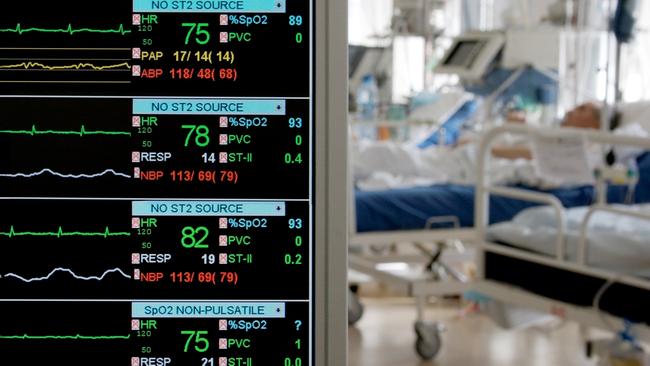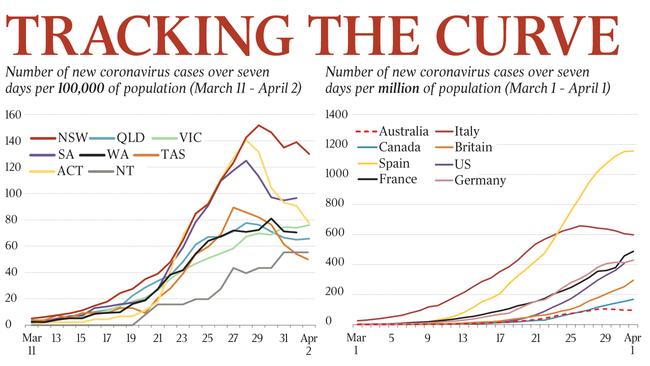‘Flatten coronavirus curve or we’ll soon run out of ICU beds’
Melbourne University professorial fellow John Mathews has warned against people assuming the country has the virus under control.

Australia could run out of intensive care beds this month unless it sufficiently flattens the “exponential’’ COVID-19 curve.
Melbourne University professorial fellow John Mathews has warned against people assuming the country has the virus under control, declaring that discovering a viable vaccine was crucial to future success.
Dr Mathews, a former Australian deputy chief medical officer and head of the National Centre for Disease Control, said even with a strong containment of the virus, it would be necessary for a vaccine to be found.
He said the exact date of when Australia could run out of intensive care beds would depend on the severity of symptoms and how many people could require intensive care.
Assuming it would be a year before a vaccine could be available, he said that with 2200 intensive care beds, Australia would need to keep the number of new cases requiring intensive care to fewer than 220 a day.
“If only 5 per cent of cases need intensive care, this means we would need to keep the daily number of new COVID-19 cases to less than 4400 a day to prevent the overload of intensive-care resources,’’ he said.
“As of 30 March, Australia was reporting 271 new cases a day, compared with 344 the previous day, suggesting that the curve is starting to flatten.
“This sounds promising, but as the number of severely ill patients requiring hospitalisation lags behind the incidence curve, the increased numbers of hospitalised patients will increase the risk of infection for health workers, which could drive the incidence curve back up again.’’
He said containment strategies would continue to depend on isolation, contact tracing, testing, social distancing and improved hygiene.

However, Dr Mathews warned that the severity of the coronavirus appeared to increase with the size of the infecting dose.
He said that severe cases could then transmit larger doses to the next generation of cases.
“It is extremely unlikely that Australia will be able to eliminate COVID-19 completely before a vaccine becomes available and even if this were possible, it would still be vulnerable to re-infections from overseas as soon as its borders were reopened,’’ he said.
“So in the medium term, Australia will aim to limit the number of new cases.
“For example, if there were no more than 1000 new cases a day, this would mean that up to 365,000 would have been affected over 12 months corresponding to about one in 70 of the Australian population.
“Even with an average of 4000 new cases a day, only 5.8 per cent of Australians would have been affected over 12 months, with as many as 15,000 deaths due to COVID-19.’’
Dr Mathews said even if the rate of infection were to be controlled at this higher level for a year, it would still be insufficient to protect the remainder of the population by herd immunity.
“Australia has already done well under difficult circumstances,” Dr Mathews said.
“With public understanding and support, it can continue to work hard to limit the number of new cases each day until a vaccine can be deployed.
“The alternative would be the disaster scenario of an uncontrolled outbreak overwhelming the healthcare system.’’



